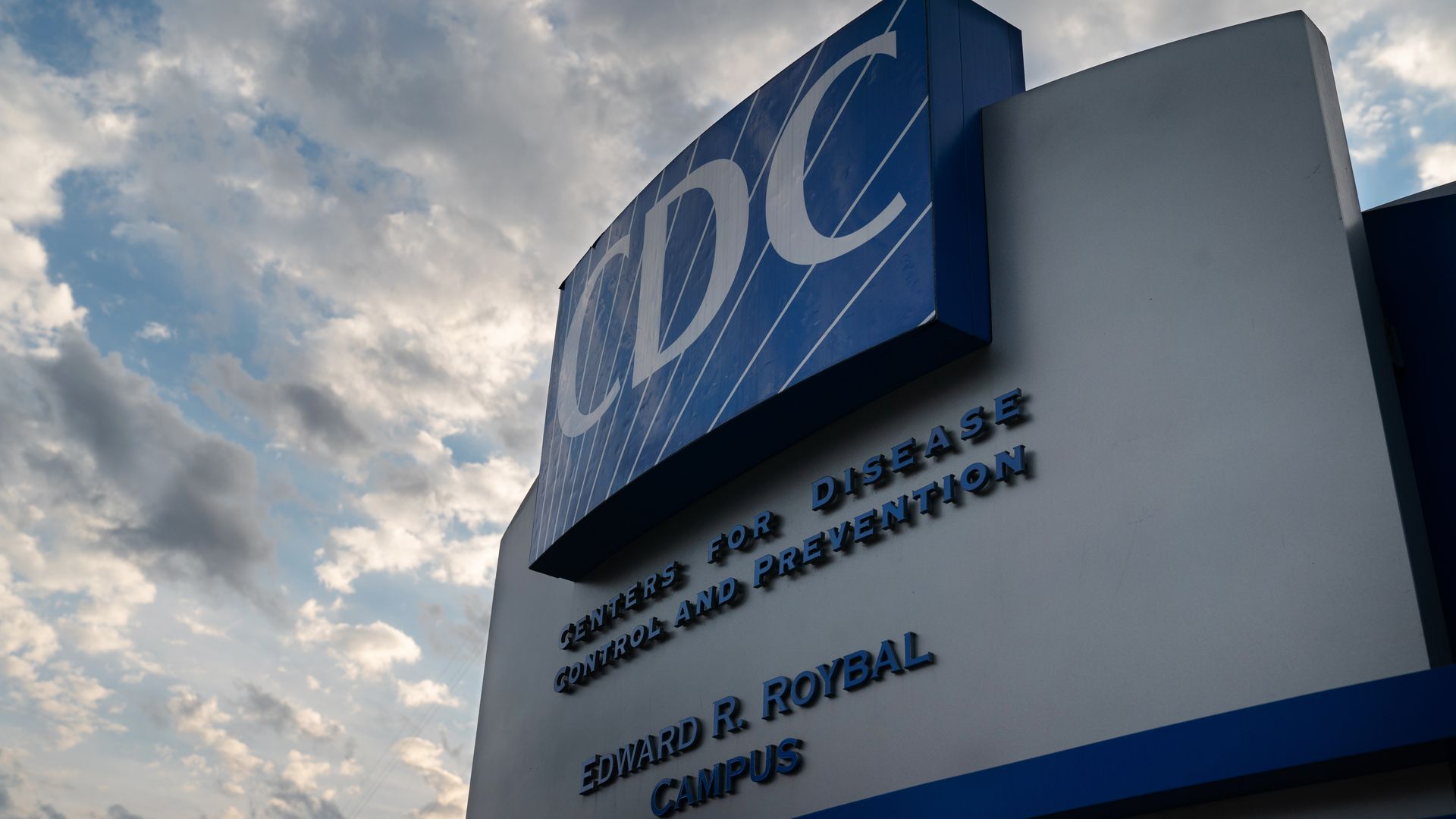| | | | | | | Presented By Blue Cross Blue Shield Association | | | | Axios Vitals | | By Tina Reed · May 19, 2022 | | Good morning, Vitals readers. Today's newsletter is 1,023 words or a 4-minute read. We're coming to you from our Axios retreat this week where many of us are meeting our co-workers in person for the first time. It feels fantastic. Situational awareness: President Biden on Wednesday invoked the Defense Production Act to address the baby formula shortage. | | | | | | 1 big thing: America's COVID apathy stress test |  Data: N.Y. Times; Cartogram: Kavya Beheraj/Axios America's in the midst of yet another coronavirus surge, setting up a high-stakes test of how well a country eager to put the pandemic behind it can adapt, Axios' Caitlin Owens and Kavya Beheraj write. Between the lines: A third of Americans say the pandemic is over, and the spike in cases hasn't prompted much noticeable policy or behavioral change. - But vaccines and therapeutics have made the virus much less dangerous — at least for people who have access to and choose to use them.
By the numbers: There were roughly 96,000 new daily cases over the last week, up 53% from about 62,500 two weeks ago. Driving the news: Biden administration officials yesterday said that a third of Americans live in areas where the risk of COVID infection is high enough that they should consider wearing a mask indoors, the NYT reports. - But there's no sign that mask mandates are coming back, even in the bluest parts of the country.
- New York City Mayor Eric Adams said yesterday that, although the city is considered to be in the high alert level, he's not bringing back compulsory masking now.
- "If every variant that comes, we move into shutdown thoughts, we move into panicking, we're not going to function as a city," Adams said, per the NYT.
Zoom in: The U.S. averaged roughly 300 daily deaths, d0wn 11% from about 340 two weeks ago. A growing number of cases are occurring in metropolitan areas with generally high vaccination rates. - The virus has killed more than a million people over the last two years. More than 300,000 of those deaths could have been prevented by vaccines, according to a recent analysis.
What they're saying: "Beyond the vaccinations and boosting, which are making a very big difference, I think Paxlovid is making a very big difference as well," White House COVID coordinator Ashish Jha told reporters yesterday, pointing to the fact that hospitalizations and deaths aren't rising at the same rate as infections. - Yes, but: Congress has been gridlocked over new pandemic funding for months, and the administration is warning that it's running out of money to buy more treatments and vaccines.
Share this story. |     | | | | | | 2. Report: Deep culture problems at CDC |  | | | Photo: Elijah Nouvelage/Bloomberg via Getty Images | | | | An internal CDC review has found deep concerns about the agency's culture and responsiveness to public health threats, Bloomberg reports. Why it matters: The findings could usher in big changes at an agency that's caught flack from public health experts, Congress and local officials for its handling of the COVID-19 crisis, writes Axios' Adriel Bettelheim. What they're saying: Individuals inside the CDC or from adjacent government agencies raised longstanding frustrations, according to Bloomberg, citing a rigid budget structure that prevents money from being reallocated to new priorities during emergencies. - The CDC also has insufficient authority and tools to obtain data from local governments and health care providers and to analyze it, the individuals said.
- The review also takes up how the CDC can more quickly turn around its scientific research and disseminate findings to the public.
Background: The CDC has been involved in a series of messaging missteps that hindered the Biden administration's COVID response. - Months of convoluted guidance hit a breaking point with widely criticized agency guidance on how long COVID patients should remain in isolation.
What's ahead: Part of the review is being led by longtime HHS official James Macrae, who continues to interview people, Bloomberg reported. - The results could give CDC director Rochelle Walensky momentum to usher in bureaucratic changes at the Atlanta-based agency.
|     | | | | | | 3. Most long COVID cases weren't hospitalized | | About 76% of patients with long COVID had not been hospitalized for their initial infection, Axios' Oriana Gonzalez writes about a new study conducted by the non-profit FAIR Health. Driving the news: While the patients weren't sick enough to be hospitalized, they experienced "abnormalities of breathing, cough, and malaise and fatigue" months after being diagnosed, the study says. The research has not been formally peer-reviewed. Details: The study examined over 78,000 people who were diagnosed with long COVID between Oct. 1, 2021 and Jan. 31, 2022. - Women were more likely than men to be diagnosed with long COVID, and people between ages 36 and 50 were in the most likely age demographic to get the diagnosis.
- Long COVID patients had higher risk scores under a system that identifies patients likely to consume more health care resources and potentially incur greater care costs long term.
My thought bubble: While this is just one study, it tracks with personal accounts from patients and health professionals. Health systems were expecting to treat the aftereffects of COVID in the sickest patients. - But "we've ended up seeing a lot of patients with mild or moderate, mostly stay-at-home infections that came in with a wide range of symptoms. It was bizarre," Bradley Sanville, a pulmonary and critical care physician who is part of the UC Davis Post-COVID-19 Clinic, told Axios for a Deep Dive on the long COVID crisis earlier this month.
|     | | | | | | A message from Blue Cross Blue Shield Association | | Providing whole-person care | | |  | | | | We need better integration of physical and mental health care to improve health. The strategy: Whole-person care makes it easier to catch mental health conditions earlier, reduce stigma and lower costs. See what Blue Cross and Blue Shield companies are doing to better integrate care. | | | | | | 4. Medicaid's digital health gap narrow |  Reproduced from Rock Health; Chart: Axios Visuals For decades, digital health entrepreneurs largely ignored Medicaid users based on assumptions about profit margins and usage rates, Axios' Erin Brodwin writes. - But a recent Rock Health report suggests people with Medicaid use digital tools at rates that closely tail the average commercially-insured person.
- Respondents enrolled in Medicaid reported using telehealth tools beyond live video at slightly higher rates than the survey average, Rock Health researchers.
Our thought bubble: Medicaid serves nearly one in five U.S. residents and represents 80 million beneficiaries and $671 billion in yearly spending. Improving access and consumer experience for this population stands to benefit everyone. |     | | | | | | 5. Catch up quick | | 👀 A case of monkeypox was identified in Massachusetts after reports of outbreaks popping up around the world. I immediately felt — if not better — way more informed after reading this piece from STAT's Helen Branswell. (STAT News) 💊 Martin Shkreli, better known as "Pharma bro" was released from a federal prison in Pennsylvania to a halfway house on Wednesday. "Getting out of real prison is easier than getting out of Twitter prison," Shkreli wrote on his Facebook page that same day. (CNBC) ⚡️ Kyle Robertson is out as CEO of digital mental health company Cerebral. It comes after increasing scrutiny of the startup's prescribing practices. (ModernHealthcare) |     | | | | | | A message from Blue Cross Blue Shield Association | | Providing whole-person care | | |  | | | | We need better integration of physical and mental health care to improve health. The strategy: Whole-person care makes it easier to catch mental health conditions earlier, reduce stigma and lower costs. See what Blue Cross and Blue Shield companies are doing to better integrate care. | | |  | It's called Smart Brevity®. Over 200 orgs use it — in a tool called Axios HQ — to drive productivity with clearer workplace communications. | | | | | | Axios thanks our partners for supporting our newsletters. If you're interested in advertising, learn more here.
Sponsorship has no influence on editorial content. Axios, 3100 Clarendon Blvd, Suite 1300, Arlington VA 22201 | | | You received this email because you signed up for newsletters from Axios.
Change your preferences or unsubscribe here. | | | Was this email forwarded to you?
Sign up now to get Axios in your inbox. | | | | Follow Axios on social media:    | | | | | |








No comments:
Post a Comment